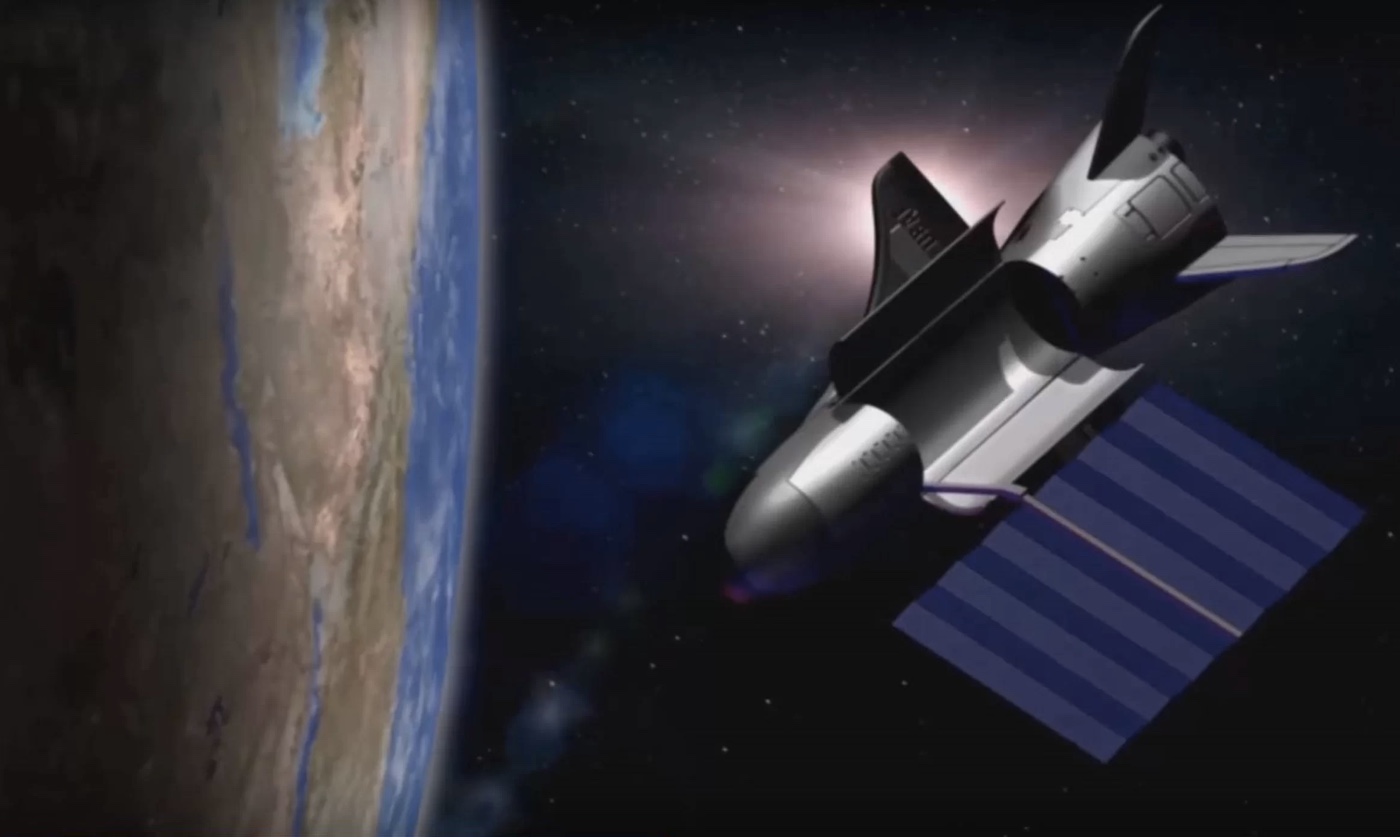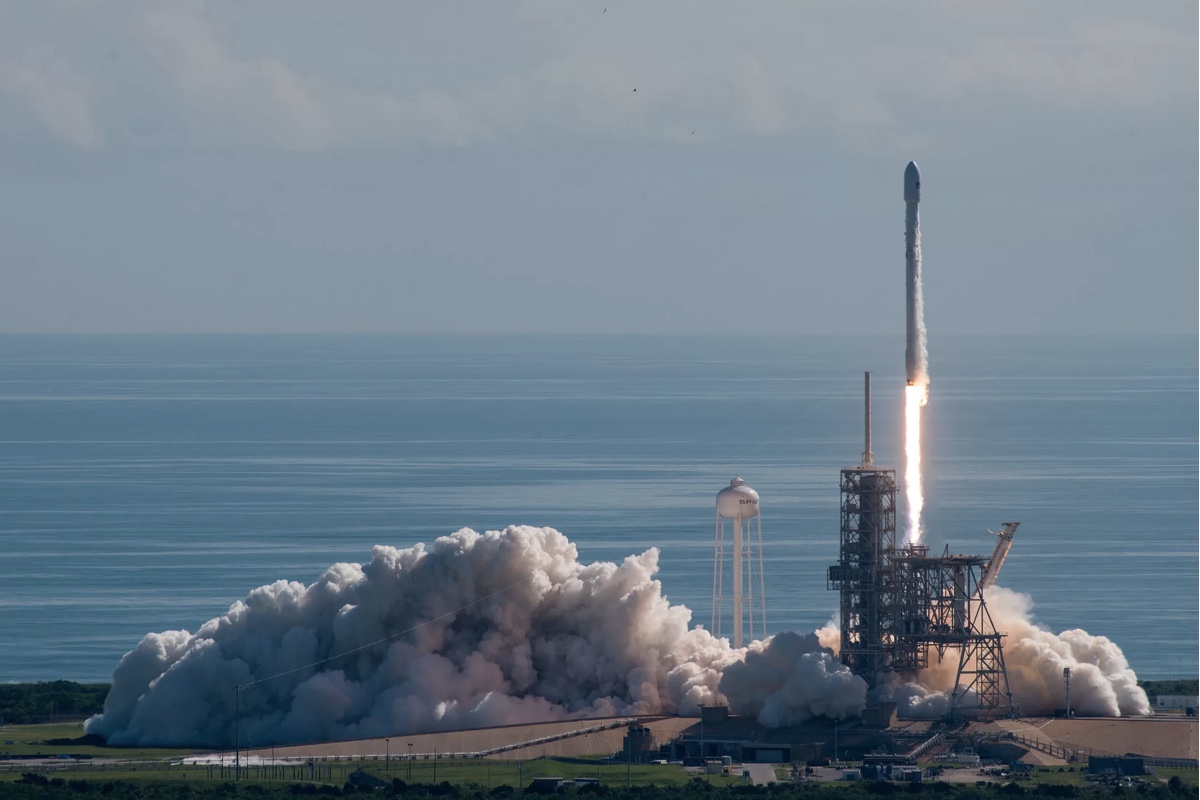X-37B Military Space Plane Wings Past 400 Days on Latest Mystery Mission

The latest mystery mission of the U.S. Air Force's robotic X-37B space plane has now passed the 400-day mark .
This mission — known as Orbital Test Vehicle (OTV-5) — was rocketed into Earth orbit on Sept. 7, 2017, atop a SpaceX Falcon 9 rocket from Launch Complex 39A at NASA's Kennedy Space Center in Florida.
The uncrewed space plane is carrying out secretive duties during the X-37B program's fifth flight. [The X-37B Space Plane: 6 Surprising Facts]
Flight duration
Each X-37B/OTV mission has set a new flight-duration record for the program:
- OTV-1 began April 22, 2010, and concluded on Dec. 3, 2010, after 224 days in orbit.
- OTV-2 began March 5, 2011, and concluded on June 16, 2012, after 468 days on orbit.
- OTV-3 chalked up nearly 675 days in orbit before finally coming down on Oct. 17, 2014.
- OTV-4 conducted on-orbit experiments for 718 days during its mission, extending the total number of days spent in space for the OTV program at that point to 2,085 days.
What's up?
Most X-37B payloads and activities are classified. The only OTV-5 payload revealed to date by Air Force officials is the Advanced Structurally Embedded Thermal Spreader, or ASETS-II.
Developed by the U.S. Air Force Research Laboratory (AFRL), this cargo is testing experimental electronics and oscillating heat pipes for long-duration stints in the space environment. According to AFRL, the three primary science objectives are to measure the initial on-orbit thermal performance, to gauge long-duration thermal performance and to assess any lifetime degradation.

Landing site
When the space plane will land is unknown. The last X-37B mission, OTV-4, touched down at the Shuttle Landing Facility at NASA's Kennedy Space Center in Florida on May 7, 2017 — a first for the program. All prior missions had ended with a tarmac touchdown at Vandenberg Air Force Base in California.
Sign up for the Live Science daily newsletter now
Get the world’s most fascinating discoveries delivered straight to your inbox.
The next X-37B mission,B OTV-6, may lift off in 2019 aboard a United Launch Alliance Atlas-V (501) rocket. Launch would be from Cape Canaveral Air Force Station's Space Launch Complex-41.
Reusable vehicles
The Air Force's X-37B "fleet" consists of two known reusable vehicles, both of which were built by Boeing at several locations in Southern California, including Huntington Beach, Seal Beach and El Segundo.
The program transitioned to the U.S. Air Force in 2004 after earlier funded research efforts by Boeing, NASA and the Defense Advanced Research Projects Agency.
Looking like a miniature version of NASA's now-retired space shuttle orbiter, the military space plane is 29 feet (8.8 meters) long and 9.6 feet (2.9 m) tall, with a wingspan of nearly 15 feet (4.6 m). The X-37B space plane has a payload bay measuring 7 feet by 4 feet (2.1 by 1.2 m), which can be outfitted with a robotic arm. The X-37B has a launch weight of 11,000 lbs. (4,990 kilograms) and is powered on orbit by gallium-arsenide solar cells with lithium-ion batteries.
On-orbit duties
The missions of the X-37B space planes are carried out under the auspices of the Air Force Rapid Capabilities Office, and mission control for OTV flights is handled by the 3rd Space Experimentation Squadron at Schriever Air Force Base in Colorado. This squadron oversees operations of the X-37B Orbital Test Vehicle.
This Schriever Air Force Base unit is billed as the Air Force Space Command's premier organization for space-based demonstrations, pathfinders and experiment testing. It gathers information on objects high above Earth and carries out other intelligence-gathering duties.
And that may be a signal as to what the robotic craft is doing — both looking down at Earth and upward.
Repeating ground tracks
Ted Molczan, a Toronto-based satellite analyst, told Inside Outer Space that OTV-5's orbit at the start of August was about 197 miles (317 kilometers) high, inclined 54.5 degrees to the equator. Its ground track repeated nearly every five days, after 78 revolutions.
"Maneuvers on August 18 and 21 raised its orbit by 45 miles (74 kilometers) which caused its ground track to exactly repeat every three days, after 46 revolutions. It was still in that orbit when last observed, on September 8, by Alberto Rango, from Rome, Italy," Molczan said.
"Repeating ground tracks are very common," he added, "especially for spacecraft that observe the Earth. I do not know why OTV has repeating ground tracks."
Leonard David is author of "Mars: Our Future on the Red Planet," published by National Geographic. The book is a companion to the National Geographic Channel series "Mars." A longtime writer for Space.com, David has been reporting on the space industry for more than five decades. Follow us @Spacedotcom, Facebook or Google+. This version of the story published on Space.com.

Leonard David is an award-winning space journalist who has been reporting on space activities for more than 50 years.










